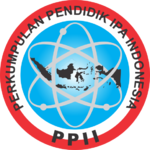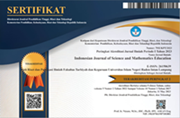Trend, challenges, and determinants of technology integration in geometry problems-solving: A sequential explanatory analysis
Abstract
This study explores trends, challenges, and success factors in integrating technology to enhance students' conceptual understanding and problem-solving skills in geometry. Using a sequential explanatory design, a quantitative analysis based on text mining and bibliometric methods was conducted on 197 articles from the ERIC database, followed by thematic analysis. The results indicate an annual publication growth of 32.26%, with key success factors including teacher competence, students' mathematical literacy, pedagogy-technology integration, and evaluation of instructional effectiveness. The COVID-19 pandemic accelerated the transformation of technology from an auxiliary tool to a core element of active learning. However, limited access and technological adaptation to complex problems remain significant obstacles. This study recommends teacher training, exploration of technology in teaching, and the development of innovative strategies and accessible technological tools. The implications of this study provide strategic guidance for policymakers, educators, and developers to optimize the use of technology in geometry education more innovatively and inclusively.
Keywords
Full Text:
PDFReferences
G. Sunzuma, “Technology integration in geometry teaching and learning,” LUMAT: International Journal on Math, Science and Technology Education, vol. 11, no. 3, pp. 1-18, 2023, doi: 10.31129/LUMAT.11.3.1938.
R. H. Shroff, F. S. T. Ting, C. L. Chan, R. C. C. Garcia, W. K. Tsang, and W. H. Lam, “Conceptualisation, measurement and preliminary validation of learners’ problem-based learning and peer assessment strategies in a technology-enabled context,” Australasian Journal of Educational Technology, vol. 39, no. 1, pp. 1–18, 2023, doi: 10.14742/ajet.7214.
X. Chen, D. Zou, H. Xie, and F. L. Wang, “Technology-enhanced higher education: Text mining and bibliometrics,” Heliyon, vol. 10, no. 4, pp. 1-18, 2024, doi: 10.1016/j.heliyon.2024.e25776.
E. Cekmez and M. Guler, “One problem, multiple solutions: The contribution of DGS to heuristics in the problem-solving process,” Journal of Computers in Mathematics and Science Teaching, vol. 38, no. 3, pp. 213–247, 2019.
J. R. Dakers, “What is technology education?,” LUMAT: International Journal on Math, Science and Technology Education, vol. 11, no. 4, pp. 1-10, 2024, doi: 10.31129/LUMAT.11.4.2207.
J. Mangubat and G. Batucan, “Teacher’s Intentions to use geogebra in teaching mathematics: An empirical study to validate technology acceptance model in the Philippines,” Magister-Journal of Educational Research, vol. 2, no. 2, pp. 42–66, 2023.
Y. A. Wassie and G. A. Zergaw, “Some of the potential affordances, challenges and limitations of using geogebra in mathematics education,” EURASIA Journal of Mathematics, Science and Technology Education, vol. 15, no. 8, pp. 1-11, 2019, doi: 10.29333/ejmste/108436.
D. Maulidiya, T. Utari, N. A. Irsal, and M. Aziza, “Investigasi pemanfaatan geogebra untuk pembelajaran matematika di Indonesia: Sebuah analisis bibliometrik,” Delta-Pi: Jurnal Matematika dan Pendidikan Matematika, vol. 12, no. 1, pp. 121–138, Sep. 2023, doi: 10.33387/dpi.v12i1.6557.
C.-L. Chen, “Predicting the determinants of dynamic geometry software acceptance: A two-staged structural equation modeling — neural network approach,” International Journal of Information and Education Technology, vol. 10, no. 6, pp. 435–442, 2020, doi: 10.18178/ijiet.2020.10.6.1403.
A. Agustin, E. Retnowati, and K. T. Ng, “The transferability level of junior high school students in solving geometry problems,” Journal of Innovation in Educational and Cultural Research, vol. 3, no. 1, pp. 59–69, Nov. 2022, doi: 10.46843/jiecr.v3i1.57.
D. Mukherjee, W. M. Lim, S. Kumar, and N. Donthu, “Guidelines for advancing theory and practice through bibliometric research,” J Bus Res, vol. 148, no. 1, pp. 101–115, Sep. 2022, doi: 10.1016/j.jbusres.2022.04.042.
D. Maulidiya, B. Nugroho, H. B. Santoso, and Z. A. Hasibuan, “Thematic evolution of smart learning environments, insights and directions from a 20-year research milestones: A bibliometric analysis,” Heliyon, vol. 10, no. 5, pp. 1-18, Mar. 2024, doi: 10.1016/j.heliyon.2024.e26191.
R. Rusli and T. N. Safaah, “Research Trend on Ethnomathematics from 2012 To 2022: A bibliometric analysis,” Indonesian Journal of Science and Mathematics Education, vol. 6, no. 1, pp. 37–47, Mar. 2023, doi: 10.24042/ijsme.v6i1.14794.
S. Salmia, H. Bancong, and S. Sudarmin, “Bibliometric Mapping of Publication Trends on the Use of Learning Media and Character Values in the Scopus Data Base From 2013 to 2022,” Journal of Innovation in Educational and Cultural Research, vol. 4, no. 3, pp. 494–502, Jul. 2023, doi: 10.46843/jiecr.v4i3.712.
K. Thakur and V. Kumar, “Application of text mining techniques on scholarly research articles: Methods and tools,” New Review of Academic Librarianship, vol. 28, no. 3, pp. 279–302, Jul. 2022, doi: 10.1080/13614533.2021.1918190.
T. Kwartler, Text mining in practice with R. John Wiley & Sons. Ltd., 2017, doi: 10.1002/9781119282105
V. Granikov, Q. N. Hong, E. Crist, and P. Pluye, “Mixed methods research in library and information science: A methodological review,” Libr Inf Sci Res, vol. 42, no. 1, p. 101003, Jan. 2020, doi: 10.1016/j.lisr.2020.101003.
N. Donthu, S. Kumar, D. Mukherjee, N. Pandey, and W. M. Lim, “How to conduct a bibliometric analysis: An overview and guidelines,” J Bus Res, vol. 133, no. 1, pp. 285–296, Sep. 2021, doi: 10.1016/j.jbusres.2021.04.070.
M. Santos-Trigo, H. Espinosa-Pérez, and A. Reyes-Rodríguez, “Connecting dynamic representations of simple mathematical objects with the construction and exploration of conic sections,” Int J Math Educ Sci Technol, vol. 39, no. 5, pp. 657–669, Jul. 2008, doi: 10.1080/00207390701871465.
M. Stupel, “A special application of absolute value techniques in authentic problem solving,” Int J Math Educ Sci Technol, vol. 44, no. 4, pp. 587–595, Jun. 2013, doi: 10.1080/0020739X.2012.729685.
M. Santos-Trigo and A. Reyes-Rodriguez, “The use of digital technology in finding multiple paths to solve and extend an equilateral triangle task,” Int J Math Educ Sci Technol, vol. 47, no. 1, pp. 58–81, Jan. 2016, doi: 10.1080/0020739X.2015.1049228.
V. Oxman, M. Stupel, and R. Segal, “On teaching extrema triangle problems using dynamic investigation,” Int J Math Educ Sci Technol, vol. 48, no. 4, pp. 603–616, May 2017, doi: 10.1080/0020739X.2016.1259514.
R. Segal, M. Stupel, A. Sigler, and J. Jahangiril, “The effectiveness of ‘what if not’ strategy coupled with dynamic geometry software in an inquiry-based geometry classroom,” Int J Math Educ Sci Technol, vol. 49, no. 7, pp. 1099–1109, Oct. 2018, doi: 10.1080/0020739X.2018.1452302.
V. Oxman and M. Stupel, “Various solution methods, accompanied by dynamic investigation, for the same problem as a means for enriching the mathematical toolbox,” Int J Math Educ Sci Technol, vol. 49, no. 3, pp. 442–455, Apr. 2018, doi: 10.1080/0020739X.2017.1392050.
M. Stupel, A. Sigler, and I. Tal, “An Interesting Dynamic Investigation of a Sangaku Problem, and What Else Can Be Asked, as a Research Activity,” International Journal for Technology in Mathematics Education, vol. 26, no. 1, pp. 27–34, Mar. 2019, doi: 10.1564/tme_v26.1.03.
J. A. Shahbari and M. Stupel, “Complementary euclidean geometry and trigonometry in solving tasks,” International Journal for Technology in Mathematics Education, vol. 29, no. 2, pp. 97–103, Jun. 2022, doi: 0.1564/tme_v29.2.04.
M. Stupel, O. Pinto, and J. Jahangiri, “Revisiting geometrical preservation properties using proof without words and interactive technology,” International Journal for Technology in Mathematics Education, vol. 29, no. 4, pp. 245–249, Dec. 2022, doi: 10.1564/tme_v29.4.05.
M. Stupel, D. Fraivert, and J. Jahangiri, “Using technology and proofs without words in teaching mathematical reasoning to pre-service and in-service geometry teachers,” International Journal for Technology in Mathematics Education, vol. 30, no. 1, pp. 45–51, Mar. 2023, doi: 10.1564/tme_v30.1.4.
V. Oxman and M. Stupel, “The problem and geometric application of infinite sequences formed from three given numbers by calculating their pairwise means,” Int J Math Educ Sci Technol, vol. 55, no. 7, pp. 1744–1752, Aug. 2024, doi: 10.1080/0020739X.2022.2154286.
B. Apari, K. Özgen, and Y. Zengin, “Developing students’ problem posing skills with dynamic geometry software and active learning framework,” Turkish Journal of Education, vol. 11, no. 2, pp. 93–125, Apr. 2022, doi: 10.19128/turje.880173.
X. Yan and R. Zazkis, “Uncovering hidden windmills across contexts,” Int J Math Educ Sci Technol, vol. 53, no. 2, pp. 535–548, Feb. 2022, doi: 10.1080/0020739X.2020.1869334.
I. M. R. Albaladejo and M. M. G. López, “Mathematical attitudes transformation when introducing GeoGebra in the secondary classroom,” Educ Inf Technol (Dordr), vol. 29, no. 8, pp. 10277–10302, Jun. 2024, doi: 10.1007/s10639-023-12085-w
M. Dehghani, H. Azarbonyad, J. Kamps, D. Hiemstra, and M. Marx, “Luhn Revisited,” in Proceedings of the 25th ACM International on Conference on Information and Knowledge Management, New York, NY, USA: ACM, Oct. 2016, pp. 1301–1310. doi: 10.1145/2983323.2983814.
H. P. Luhn, “The Automatic Creation of Literature Abstracts,” IBM J Res Dev, vol. 2, no. 2, pp. 159–165, Apr. 1958, doi: 10.1147/rd.22.0159.
X. Yao, "Pre-service Mathematics Teachers' Instrumental genesis and their development of geometric knowledge in a dynamic geometry environment,” International Journal for Technology in Mathematics Education, vol. 27, no. 4, pp. 191–206, Dec. 2020, doi: 10.1564/tme_v27.4.02.
D. Aslan, S. Dağaynası, and M. Ceylan, “Technology and geometry: Fostering young children’s geometrical concepts through a research-based robotic coding program,” Educ Inf Technol (Dordr), 2024, doi: 10.1007/s10639-024-12747-3.
O. Wohlfart and I. Wagner, “Teachers’ role in digitalizing education: an umbrella review,” Educational technology research and development, vol. 71, no. 2, pp. 339–365, Apr. 2023, doi: 10.1007/s11423-022-10166-0
F. Chen and G. Chen, “Technology-enhanced collaborative inquiry in k–12 classrooms: A systematic review of empirical studies,” Sci Educ (Dordr), vol. 1, no. 1, pp. 1-43, Jul. 2024, doi: 10.1007/s11191-024-00538-8.
H. Crompton, M. R. Grant, and K. Y. H. Shraim, “Technologies to enhance and extend children’s understanding of geometry: A configurative thematic synthesis of the literature,” J Educ Techno Soc, vol. 21, no. 1, pp. 59–69, 2018.
S. Radović, M. Marić, and D. Passey, “Technology enhancing mathematics learning behaviours: Shifting learning goals from ‘producing the right answer’ to ‘understanding how to address current and future mathematical challenges,’” Educ Inf Technol (Dordr), vol. 24, no. 1, pp. 103–126, Jan. 2019, doi: 10.1007/s10639-018-9763-x.
DOI: http://dx.doi.org/10.24042/ijsme.v7i3.24456
Refbacks
- There are currently no refbacks.
Copyright (c) 2024 Unit Riset dan Publikasi Ilmiah FTK UIN Raden Intan Lampung

This work is licensed under a Creative Commons Attribution-ShareAlike 4.0 International License.

Indonesian Journal of Science and Mathematics Education is licensed under a Creative Commons Attribution-ShareAlike 4.0 International License.





